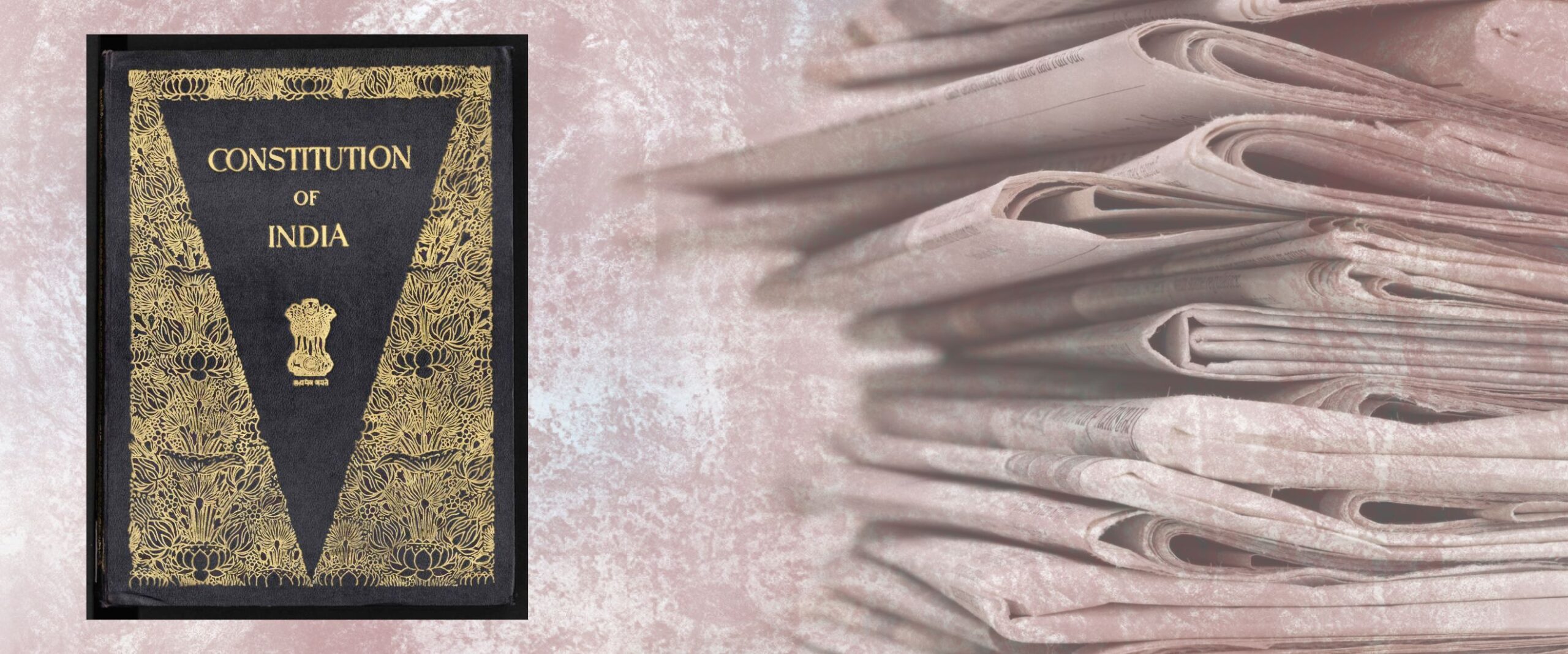Analysis
Article 19: Prescription, procedure and the press
DESK BRIEF: Recently, it seems that the prescriptive aspect of Article 19 is only a poetic indulgence when faced with media rights

On 3 October, journalists working for Newsclick were arrested by the Delhi Police. The police relied on provisions of the Unlawful Activities (Prevention) Act, 1967 to carry out the arrest and also the seizure of equipment like laptops and phones. Soon after, 18 press bodies wrote an open letter to Chief Justice D.Y. Chandrachud condemning what they considered a wilful attack on press freedom. The letter cited the Supreme Court’s observations in the Pegasus case where the protection of sources was recognised as an “important and necessary corollary” of press freedom. This made me look up how constitutional protections had been invoked to provide actual relief to journalists over the years.
Back in 1950, freedom of speech and expression under the spanking new Article 19 was called into play in two major cases. In Brij Bhushan, the Chief Commissioner of Delhi had issued a “pre-censorship order” on the magazine Organiser. The Supreme Court struck it down as a restriction on press freedom. In Romesh Thapar, the Madras government had banned the Cross Roads magazine under the Madras Maintenance of Public Order Act, 1949. The majority judgement of a five-judge bench quashed the ban and held that the restriction was wider than what was permissible under Article 19(2).
Following these cases, the first amendment in 1951 added to the list of reasonable restrictions under Article 19(2). The addition of the categories of “public order”, “friendly relations with foreign states” and “incitement to offence” was a direct result of the Supreme Court decisions in Brij Bhushan and Thapar.
In Bennett Coleman v Union of India (1972), the Court was considering the validity of the Newsprint Policy which imposed restrictions on the number of newspaper titles a media house can own as well as the number of pages in a newspaper. The Court held that the Policy was unconstitutional.
Then came the Emergency, when the Congress government blacked out the press. This period suggested that the Constitution could as easily be invoked for the clamping of rights as for their protection.
In 1984, in Indian Express Newspapers (Bombay) v Union of India, news companies argued that an import duty led to an increased cost of newspapers and a drop in circulation. The Court directed the central government to re-examine its taxation policy. “As long as the Court sits,” the judgement declared loftily, “newspapermen need not have the fear of their freedom being curtailed by unconstitutional means.”
The brief history above seems to suggest that restraints on free speech could be categorised into two broad categories: direct censorship and indirect censorship via the regulatory route. Recent years have seen the emergence of a more disturbing trend—attacks on the personal liberty of journalists, and its consequent chilling effect.
In June 2021, the Supreme Court quashed the FIR filed against journalist Vinod Dua for sedition over a YouTube video. And more recently, while granting bail to Alt News co-founder Mohammed Zubair, who was arrested for tweets from 2021, the Chief Justice remarked “How can we tell a journalist not to write?…” These orders show that the ideals have some fight in them still.
Can constitutional protections keep up with the guiles of the executive, which is finding ways to arrest journalists under laws targeted at terrorists and white collar criminals? Recent developments have reinforced the fact that the prescriptive aspect of the Constitution can feel like a poetic indulgence when faced with the juggernaut of realpolitik. Perhaps that is why one of the requests made by the press bodies to the CJI is to “evolve guidelines for the interrogation of journalists and for seizures from them.” At this point, specific directives may be more useful than grand appeals to constitutional values.
On Monday, the Delhi High Court will sit to hear the challenge to the Newsclick arrests. Hopefully, it will consider both the poetic prescription of the Constitution and the prosaic procedure of the law.
R. Sai Spandana, associate editor
